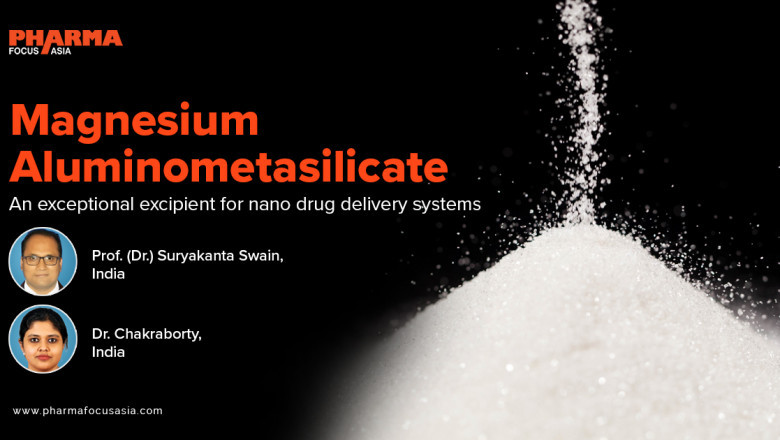views
Authors:
Suryakanta Swain, Amity Institute of Pharmacy, Amity University Kolkata
Apala Chakraborty, Amity Institute of Pharmacy, Amity University Kolkata

Applications in nanodrug delivery system
This magnesium aluminometasilicate (Al2O3·MgO·1.7SiO2·xH2O) has a wide range of uses in pharmaceutical formulation design, including tablet binder/disintegrant in solid dosage form, fluidity-enhancing agent, adsorber, and stabiliser in the manufacture of self-emulsifying and liquisolid drug delivery systems. In a recent study, magnesium aluminometasilicate has been employed as a nanocarrier in nanodrug delivery systems, with encouraging results (Gupta et al., 2003; El-Say et al., 2023).
Adsorbent
The shortcomings of the nanoemulsion technology, such as stability and handling issues, can be reduced by converting it to solid dosage form. According to several recent publications, transforming self-nano emulsifying drug delivery systems (SNEDDS) into solid-SNEDDS via adsorption, freeze drying, and spray drying improves the formulation's self-life, simplifies the processability, and scalability (Date et al., 2010). Magnesium aluminometasilicate is an effective liquid adsorbent due to its practical shape (Khalid et al., 2023). The high surface area of magnesium aluminometasilicate allows for equal adsorption of oil and liquid while maintaining good flow properties (Friedl et al., 2021). Aluminum methasilicate's microstructural characteristics have been observed to change when a drug particle is incorporated. The increased basal spacing during drug intercalation in the silica layers of the aluminometasilicate is the most likely mechanism of adsorption (Totea et al., 2020). Aluminometasilicate has a better adsorption capacity than other excipients, such as anhydrous dibasic calcium phosphate, since it has nearly 7.5 times more surface area and forms a stronger connection with the medication. The interacting silanol group on the outer side of silicates forms hydrogen bonds with the protons of drug molecules, which is not seen in calcium phosphate (Kutza et al., 2013).
Solubility enhancer
Drugs that are poorly water-soluble can be improved by dispersing them on aluminometasilicate. Amorphous solid dispersion of poorly water-soluble medicines in a polymeric matrix enhances particle dissolution. Preparing nanometric solid dispersion ensures faster dissolving and higher bioavailability. Dispersing a medication in amorphous aluminosilicate produces a stable solid dispersion with improved solubility in the 200-400 nm range (Censi et al., 2016). This increased solubility is owing to the greater effective surface area of the excipients over which the medication would be dispersed, which promotes rapid desorption of the poorly water-soluble pharmacological molecule (Sruti et al., 2013).


Stability modifier
Adsorbing pharmaceuticals into amorphous mesoporous materials to increase stabilisation has gained popularity over the last decade because of their numerous benefits. This amorphous material (such as magnesium aluminometasilicate) is inert, has smaller pore diameters of 2 and 50 nm, and unidirectional networking of the mesoporous substance, which helps to suppress the conversion of entrapped drug moiety from amorphous to crystal nature via geometrical constraint method (Azad et al., 2018). According to certain findings, the inclusion of harmless, inert magnesium aluminometasilicate helps to avoid drug desorption into packaging materials. This reduces the interaction between the medicine and the packaging materials, improving the stability of the drug substance. Co-grinding the medication with magnesium aluminometasilicate, which has an adjustable pore size and modifiable surface, increases the drug's physical stability by causing amorphization. It has also been shown that at higher temperatures, drug-magnesium aluminometasilic can form a less volatile and more stable version of the drug excipient complex (Krupa et al., 2010).
Read more: https://www.pharmafocusasia.com/research-development/magnesium-aluminometasilicate






















Comments
0 comment